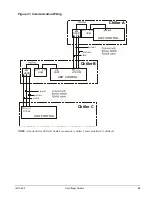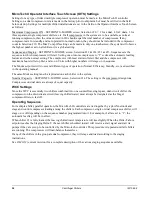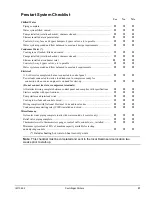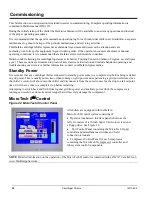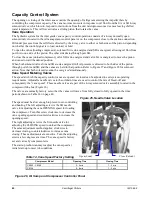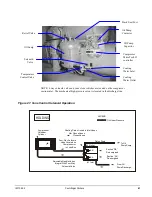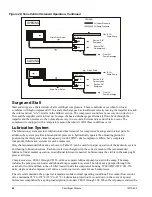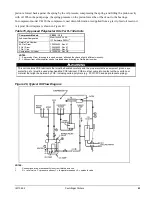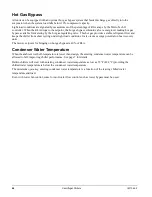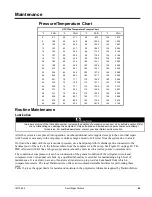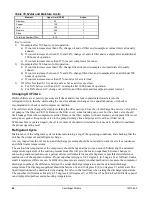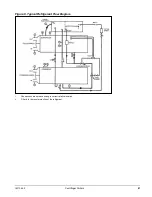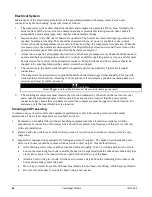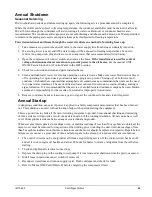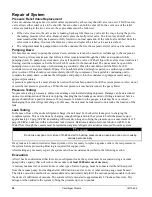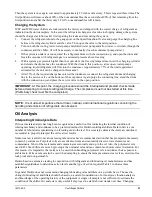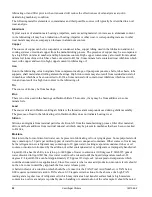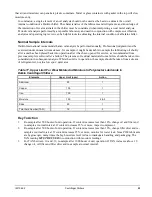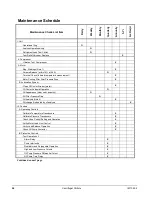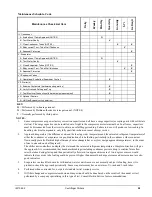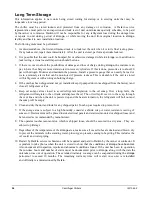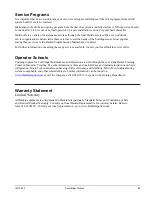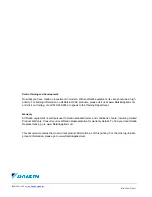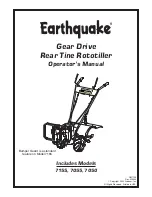
IM 1044-2
Centrifugal Chillers
49
Annual Shutdown
Seasonal Servicing
Prior to shutdown periods and before starting up again, the following service procedures must be completed.
Where the chiller can be subject to freezing temperatures, the condenser and chiller must be drained of all water.
Dry air blown through the condenser will aid in forcing all water out. Removal of condenser heads is also
recommended. The condenser and evaporator are not self-draining and tubes must be blown out. Water permitted
to remain in the piping and vessels can rupture these parts if subjected to freezing temperature.
Forced circulation of antifreeze through the water circuits is one method of avoiding freeze up.
1. Take measures to prevent the shutoff valve in the water supply line from being accidentally turned on.
2. If a cooling tower is used, and if the water pump will be exposed to freezing temperatures, be sure to
remove the pump drain plug and leave it out so any water that can accumulate will drain away.
3. Open the compressor disconnect switch, and remove the fuses
. If the transformer is used for control
voltage, the disconnect must remain on to provide power to the oil heater.
Set the manual UNIT
ON/OFF switch in the Unit Control Panel to the OFF position.
4. Check for corrosion and clean and paint rusted surfaces.
5. Clean and flush water tower for all units operating on a water tower. Make sure tower blowdown or bleed-
off is operating. Set up and use a good maintenance program to prevent “liming up” of both tower and
condenser. It should be recognized that atmospheric air contains many contaminants that increase the need
for proper water treatment. The use of untreated water can result in corrosion, erosion, sliming, scaling or
algae formation. It is recommended that the service of a reliable water treatment company be used.
Daikin
assumes no responsibility for the results of untreated or improperly treated water.
6. Remove condenser heads at least once a year to inspect the condenser tubes and clean if required.
Annual Startup
A dangerous condition can exist if power is applied to a faulty compressor motor starter that has been burned
out. This condition can exist without the knowledge of the person starting the equipment.
This is a good time to check all the motor winding resistance to ground. Semi-annual checking and recording
of this resistance will provide a record of any deterioration of the winding insulation. All new units have well
over 100 megohms resistance between any motor terminal and ground.
Whenever great discrepancies in readings occur, or uniform readings of less than 50 megohms are obtained, the
motor cover must be removed for inspection of the winding prior to starting the unit. Uniform readings of less
than 5 megohms indicate motor failure is imminent and the motor should be replaced or repaired. Repair before
failure occurs can save a great deal of time and labor spent in the cleanup of a system after a motor burnout.
1. The control circuit must be energized at all times, except during service. If the control circuit has been off
and oil is cool, energize oil heaters and allow 24 hours for heater to remove refrigerant from the oil before
starting.
2. Check and tighten all electrical connections.
3. Replace the drain plug in the cooling tower pump if it was removed at shutdown time the previous season.
4. Install fuses in main disconnect switch (if removed).
5. Reconnect water lines and turn on supply water. Flush condenser and check for leaks.
6. Refer to Manual OM CentrifMicro II before energizing the compressor circuit.

